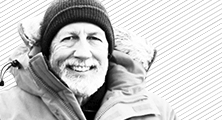For decades, the majority of chemists have taken undergraduate courses oft-entitled “Analytical Chemistry”. Historically, such courses covered topics that many chemists label as “classical”: error analysis, gravimetry, titration, acid/base buffers, redox reactions and some instrumentation. The philosophy? Chemists needed to separate, identify and quantify chemical substances.
Having taught Analytical Chemistry since the late 80s, it became clear to me that it was not subject matter pertinent only to skilled chemists. And during the past few years, students from biology, chemical engineering, geology, environmental science and even physics started to take the course. The motivation behind this increased interest is the realization that, in addition to using many of the same instruments, the same fundamental skills for making reliable and accurate measurements are required, whether you are measuring dopamine in rat brain cells, CO2 in the atmosphere, hydrocarbon fractionation in petroleum – or the soluble salts in martian soil…
In fact, my own research focuses on fundamental questions in planetary science by using modern in situ or on-site analytical systems that are custom designed to make accurate and relevant measurements of biogeochemistry in extreme environments – Mars. As a co-investigator and wet chemistry laboratory lead scientist for the Phoenix Mars mission, my group and I were able to perform the first wet chemical analysis of martian soil. The analyses revealed an alkaline soil containing a variety of soluble minerals, including, somewhat unexpectedly, perchlorate. This surprising discovery prompted us to analyze soils in Antarctica, and we found that the soils of the entire continent also contained perchlorate, and that its extent is probably as global on Earth as it is on Mars. This finding has global implications; perchlorate is currently the target of environmental regulations in many countries. The question must now be: what exactly constitutes a “pollutant”, when it appears to be produced by nature? The same type of sensor array developed for Mars is now being used to analyze the chemistry of deep-sea thermal vents in the Atlantic. Our longer-term goal is to use similar analytical devices to investigate the surface and sub-glacial oceans on other planetary bodies such as Jupiter's moon, Europa. So, you see, analytical science is truly ubiquitous. It is practiced in forensics, agriculture, pharmaceutics, commerce, manufacturing, space exploration – every industry imaginable. It affects everything from the food we eat to the cars we drive to the very environment in which we live. To address these sweeping changes in application, my analytical chemistry course slowly morphed to the point where, not only did its name change to “Quantitative Analysis”, but one-third of it is now devoted to understanding scientific method and doing “good science” – covering more rigorously error analysis, precision, accuracy, statistics, sampling, presentation of data and beyond. The rest of the course is devoted to using several types of modern instruments, along with hands-on laboratory experiences where classroom topics are put into practice. For me, “quantitative analysis” is the epic saga and essence of science; the art and core of doing good science is observation and measurement. From the very first observations made by humans thousands of years ago, our knowledge of the world and universe has grown by the accumulation of millions of persistent and repeatable measurements. Humans are, from birth, analytical and scientific beings, and left to their own devices will take measurements with all five senses and act to control their environment. The synergy of hypothesizing, observing and measuring [science], transforming these into useful tools and applications [engineering], and using these new tools [technology] to make new observations and measurements, continues to help form culture and civilization. It is the underlying force that drives scientific progress. Now more than ever, there is a need to make reliable analytical measurements, so I find it disquieting that many universities have been dropping courses in analytical science over the past few decades; all too often, the material is integrated into lower level courses. But considering the overcrowded first-year curriculum, I doubt that enough emphasis and time is spent on ensuring that students learn how to measure analytically or obtain enough hands-on experience. This lack of analytical science increasingly appears in top journals, where error analysis is often omitted or inaccurately completed. For me, the launch of The Analytical Scientist is a welcome addition, mainly in the hopes that it will contribute to a new focus on “good science”. The art of making accurate and reliable measurements, whether in chemistry, biology, physics, geology – or any other domain, underpins improved understanding of ourselves and our universe. We are all, in many ways, analytical scientists. The challenge is to make sure we all learn and use these analytical abilities critically, rationally and responsibly.





